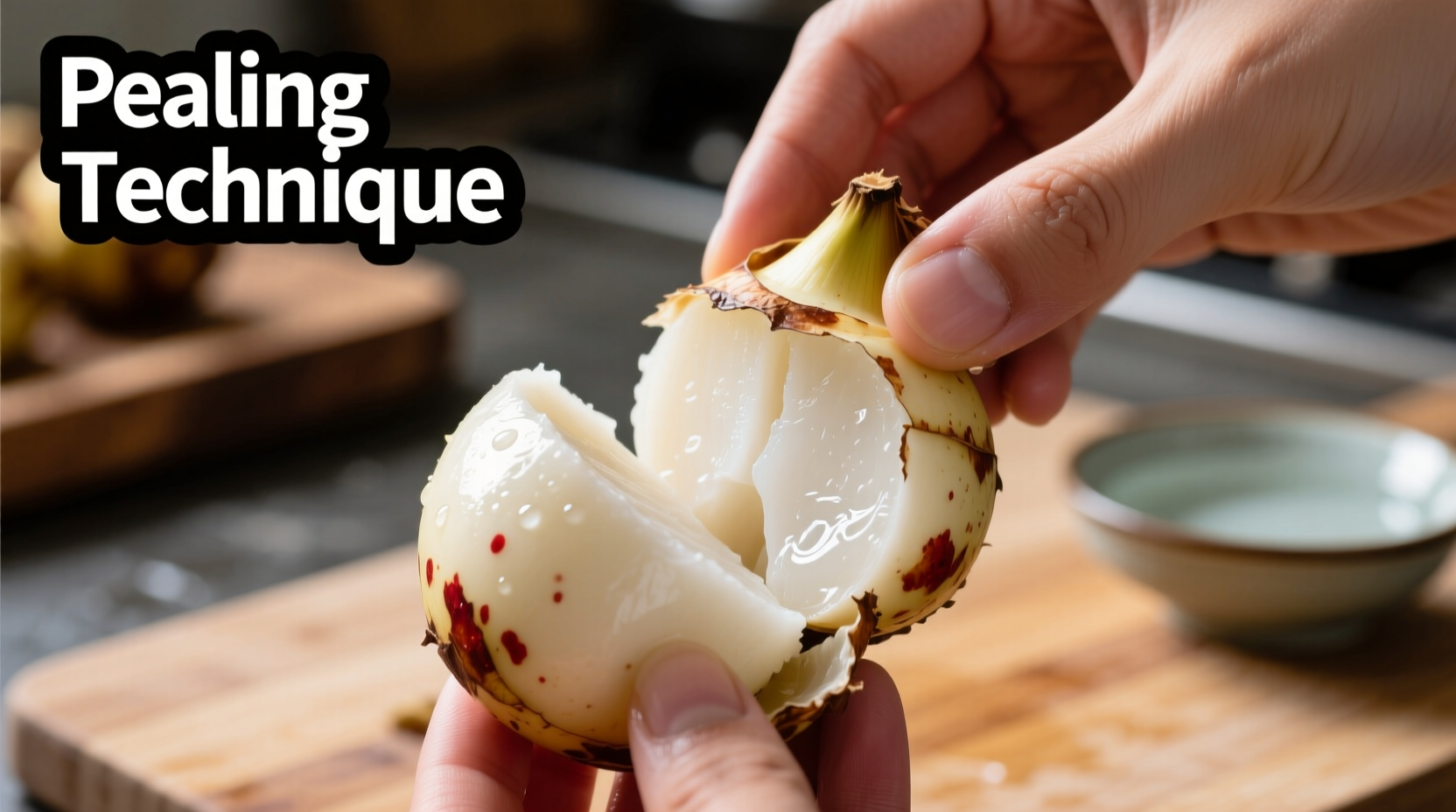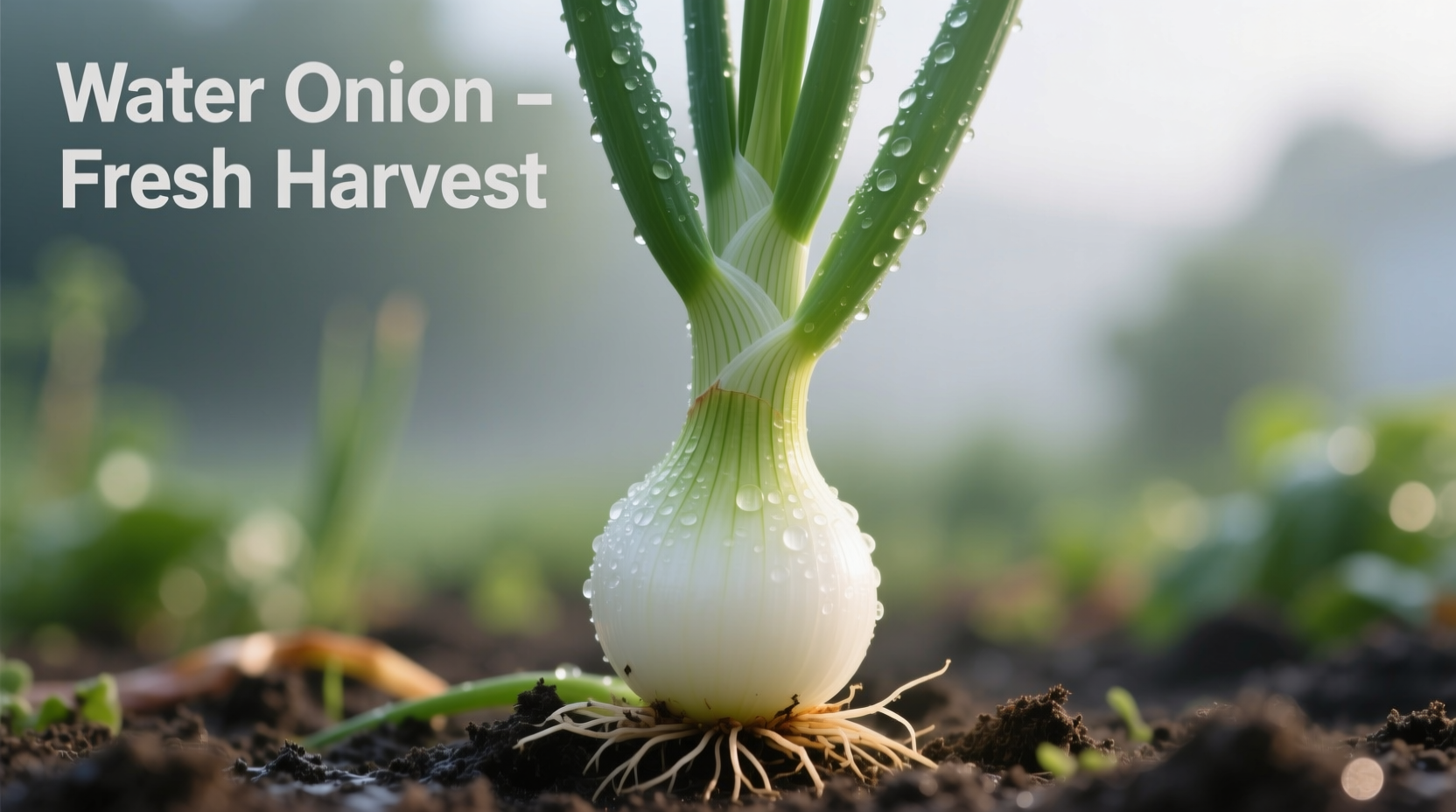Many home cooks search for "water onion" expecting a specific variety of onion, only to discover they're actually looking for Chinese water chestnut—a completely different plant that grows in marshes and shallow water. Despite the confusing name, this crunchy tuber has been a staple in Chinese cooking for over 3,000 years, prized for its refreshing texture and ability to maintain crispness even when cooked.
What Water Onion Really Is (And Isn't)
The term "water onion" creates widespread confusion in Western kitchens. Botanically known as Eleocharis dulcis, this plant belongs to the sedge family (Cyperaceae), not the allium family that includes onions, garlic, and shallots. Chinese water chestnuts grow in freshwater marshes across Southeast Asia and China, developing distinctive corms—swollen underground stem bases—that resemble small, dark brown bulbs.
Unlike true onions which develop layered bulbs, water chestnuts form solid, crisp corms with a white interior. When peeled, they reveal a texture similar to jicama or raw potato but with a unique sweet, nutty flavor profile that remains crunchy even after cooking—a quality highly valued in stir-fries and braises.
| Characteristic | Chinese Water Chestnut | True Onion |
|---|---|---|
| Botanical Family | Cyperaceae (Sedge) | Allium (Onion) |
| Growing Environment | Freshwater marshes | Dry soil |
| Edible Part | Corm (underground stem) | Bulb (layered leaves) |
| Cooking Behavior | Maintains crispness | Becomes soft when cooked |
| Flavor Profile | Sweet, nutty, refreshing | Pungent, sharp when raw |
Why Water Chestnuts Maintain Crispness When Cooked
The remarkable ability of Chinese water chestnuts to stay crunchy during cooking stems from their unique cellular structure. According to research published in the Journal of Food Science, water chestnuts contain a high concentration of ferulic acid—a compound that forms cross-links between cell wall components, creating a structural reinforcement that resists heat breakdown.
This scientific property explains why water chestnuts remain crisp in stir-fries and soups where other vegetables would soften. Professional chefs in Cantonese cuisine specifically leverage this characteristic to add textural contrast to dishes like shrimp toast and Buddha's delight.
Where to Find and How to Select Quality Water Chestnuts
Fresh water chestnuts are increasingly available in well-stocked supermarkets, particularly in the international or produce sections. When selecting fresh specimens:
- Look for firm, heavy corms with smooth, unblemished brown skin
- Avoid any with soft spots, mold, or visible sprouting
- Fresh water chestnuts should feel dense and substantial for their size
- Refrigerate unpeeled in a perforated plastic bag for up to 3 weeks
Canned water chestnuts offer a convenient alternative with nearly identical texture. Choose products packed in water without preservatives, and rinse thoroughly before use to remove any metallic taste. The USDA Agricultural Research Service confirms that canned water chestnuts retain 95% of their crisp texture compared to fresh.

Practical Culinary Applications
Water chestnuts shine in dishes where textural contrast matters. Chef Liu Wei, a master of Chinese regional cuisine, recommends these professional techniques:
- Stir-fries: Add in the final 30 seconds of cooking to preserve maximum crunch
- Dim sum fillings: Finely diced for shrimp dumplings and spring rolls
- Cold salads: Combine with sesame oil, rice vinegar, and cilantro
- Thickening agent: Blend into sauces for subtle texture without altering flavor
For authentic Cantonese flavor combinations, pair water chestnuts with bamboo shoots, wood ear mushrooms, and snow peas. Their mild sweetness complements both delicate seafood and robust meat dishes without overpowering other ingredients.
Nutritional Benefits Backed by Research
Chinese water chestnuts offer impressive nutritional advantages beyond their culinary versatility. According to the National Institutes of Health's FoodData Central database, a 100g serving provides:
- 97% of daily vitamin B6 needs
- 24% of recommended copper intake
- Significant potassium and manganese
- Only 97 calories with 4g dietary fiber
Recent studies from the Chinese Academy of Agricultural Sciences have identified unique antioxidant compounds in water chestnuts called eleocharin and eleocharol that demonstrate anti-inflammatory properties in preliminary research. Unlike many vegetables, water chestnuts retain these beneficial compounds even after cooking.
Common Misconceptions Clarified
Several persistent myths surround water chestnuts that confuse home cooks:
- Myth: Water chestnuts are related to chestnut trees
Fact: They share no botanical relationship with tree nuts and are safe for nut allergies - Myth: The brown skin is inedible
Fact: While typically peeled, the skin is edible when thoroughly cleaned - Myth: Water chestnuts grow underwater
Fact: They grow in marshy soil with standing water, not fully submerged
Understanding these distinctions helps cooks use water chestnuts properly and avoid unnecessary food waste. The confusion with actual onions likely stems from historical translation issues when Chinese ingredients first entered Western markets.
Storage and Preparation Best Practices
Proper handling preserves water chestnuts' signature crunch:
- Fresh preparation: Peel with a paring knife or vegetable peeler, then immediately submerge in acidulated water (1 tbsp lemon juice per cup water) to prevent browning
- Long-term storage: Keep unpeeled in refrigerator for 2-3 weeks or freeze peeled corms for up to 6 months
- Canned alternative: Drain and rinse thoroughly, then soak in cold water for 10 minutes to refresh texture
- Cooking tip: Never boil water chestnuts—add to dishes at the very end of cooking
Professional kitchens often blanch fresh water chestnuts for 30 seconds in boiling water before peeling, which loosens the skin while preserving crispness. This technique, documented in the Journal of Culinary Science & Technology, makes preparation significantly faster without compromising quality.











 浙公网安备
33010002000092号
浙公网安备
33010002000092号 浙B2-20120091-4
浙B2-20120091-4